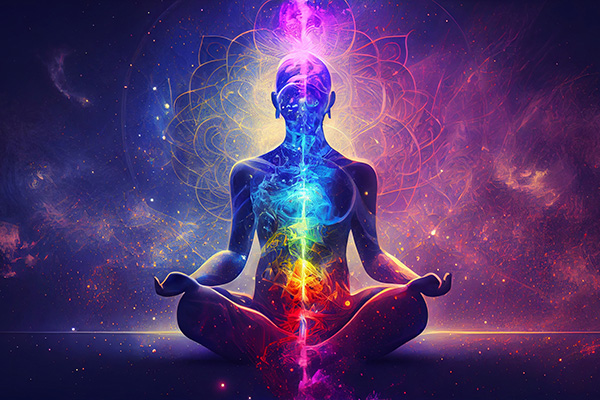visualization
Create Your Own Energy Cleansing Spray
 Remember the last time you changed out a dirty air filter from your air-conditioning unit, vacuum cleaner, or your car? Remember how clogged with dust it was? In our living spaces, negative energies accumulate over time just like those ‘dust bunnies.’
Remember the last time you changed out a dirty air filter from your air-conditioning unit, vacuum cleaner, or your car? Remember how clogged with dust it was? In our living spaces, negative energies accumulate over time just like those ‘dust bunnies.’
Even though we can’t see these energies, there is a way to clear them on a regular basis. Think of it as the spiritual version of house cleaning.
Just as we’re drawn to refresh our surroundings with a good spring clean, our homes and sacred spaces crave energetic renewal, too.
Energies from arguments, stress, illness, or even just the daily grind can leave behind subtle residue. This energetic debris doesn’t vanish on its own. Left unchecked, it can affect your mood, your sleep, and even the flow of abundance into your life.
The first and most obvious step to take is to physically clean your space. Clutter and unwanted items work as repositories for negative energy, so it’s important to get rid of it.
After you’re done, imagine the space being deep-cleaned with an indigo or violet-colored flame. Use this as a silent meditation, and picture the flames consuming all that invisible ‘dust.’
And, just like your body or your car, your space can be cleansed and cleared of obstructions.
The easiest way to do this is to create a personal essential oil blend, which can be sprayed throughout your office and home. If made right, these smell wonderful, although their main purpose is for energy clearing and not aromatherapy.
Here’s what you’ll need to make your very own space-clearing spray blend. The ingredients can be purchased at an herbal supplies or natural products store.
Why Manifestation (Sometimes) Doesn’t Work
 For many years, manifestation has been a buzzword in the spiritual community. An array of manifestation gurus advise us every day to journal, set intentions, clear our chakras, consult our pendulums, visualize our wishes and goals as if they are already real, and maintain a “high vibe” energy.
For many years, manifestation has been a buzzword in the spiritual community. An array of manifestation gurus advise us every day to journal, set intentions, clear our chakras, consult our pendulums, visualize our wishes and goals as if they are already real, and maintain a “high vibe” energy.
In theory, this should bring our desires into manifested form. But wha tif we do all the right things…and still, nothing happens?
If you’ve ever felt deflated after months, even years of affirmations, vision boards, visualized meditations, crystal grids, and candle lighting rituals, you’re not alone. There are real reasons why manifestation doesn’t always work the way we expect.
Years ago, a young man called me for a reading, utterly discouraged. He’d been practicing the Law of Attraction for months with no results.
“I still don’t have a Porsche in my driveway,” he said flatly. “This manifestation thing just doesn’t work.”
So, I asked him, “What have you actually done to get the Porsche?”
He looked confused. “Well, I’ve visualized it. I’ve journaled about it. I imagine myself driving it every night before I fall asleep. But it’s still not there.”
I smiled and said, “That’s a great start. But what else have you done?”
Confused silence.
That’s when I explained: manifestation isn’t just about imagining or magic. It’s about alignment. You can affirm, wishlist and believe all you want, but if your daily choices, habits, and actions aren’t in harmony with your vision, the energy stalls.
The Magicless Misery Of ‘Compare And Despair’
 I once attended a Toastmasters meeting where a gentleman was delivering his first speech to this specific group. It was an ice breaker to have us get acquainted with him. Instead of the typical short autobiographical introduction this speaker chose to give us an overview of his philosophy of life.
I once attended a Toastmasters meeting where a gentleman was delivering his first speech to this specific group. It was an ice breaker to have us get acquainted with him. Instead of the typical short autobiographical introduction this speaker chose to give us an overview of his philosophy of life.
He told his audience that he sees himself entering a new phase of his life right now. He spoke about how important it is to get to know yourself and to take care of yourself first and foremost, and to always live in the moment.
After the speech and applause, the toastmaster reflected briefly on what the talk meant to him as he had listened. He said it reminded him of a mentor who had once, many years ago, said to him, “Compare… and despair”. If in life you are constantly comparing yourself to others, or comparing what you have with what others have, or what you feel you lack, or need to achieve, then all that will do is bring yourself unnecessary despair.
The only thing you should ever compare yourself against, his mentor added, is yesterday. Today did you do something constructive or grow in some way that makes you a better person than you were yesterday?
Too often we compare ourselves with our peers, both in our personal and professional lives. Why did he get a raise and not me? Why can I not find a soulmate like she did? Why can’t I be a successful entrepreneur like him? How come they get to have all these wonderful vacations?
Spiritual Strategies For A Loving Relationship
 Over the years I have worked with many clients who either want to improve an existing relationship or manifest a new relationship.
Over the years I have worked with many clients who either want to improve an existing relationship or manifest a new relationship.
In my readings, I have seen that most of us carry patterns, energy blocks, or emotional knots that quietly affect our love lives. Many people describe the same inner cycle: a longing for deeper connection followed by fear, self-doubt, and frustration.
Depending on the needs to the particular individual or couple, I often recommend a few simple yet powerful practices that can shift the romantic energy field and open the heart.
These practices are gentle and effective, working not just on the emotional level but on the spiritual and energetic levels as well. They help clients reconnect with their inner wisdom and realign with love.
We tend to overthink our love lives. We analyze our relationships from every angle, hoping to find the answers in logic.
But love is not a puzzle to be solved. It is a frequency to be attuned to. And when we work with spiritual tools, we allow ourselves to rise above the clutter of thought and enter a state of clarity and openness.
I have found that the following practices, when done consistently, create a soft and supportive foundation for emotional healing and soulful connection. They do not require dramatic effort or complex rituals. They are simple shifts in intention and awareness that can lead to powerful outcomes.
A Beginner’s Guide To Holistic Healing
 True healing is about more than just easing lower back pain or calming anxious thoughts. It’s about supporting the “whole you” so you can live in greater balance, joy and peace.
True healing is about more than just easing lower back pain or calming anxious thoughts. It’s about supporting the “whole you” so you can live in greater balance, joy and peace.
It means caring for the body, the heart, the mind, and the soul. While each of these areas can be worked on separately, the deepest transformation happens when they’re all supported together. That’s the essence of holistic healing.
For many people who are new to holistic healing, it can seem complex, mysterious, or even intimidating. Often, there’s curiosity, but also uncertainty about where to begin, especially if they’ve never tried it before.
Some worry they’re not knowledgeable enough, or believe it’s something only meant for people with special spiritual insight or advanced esoteric understanding. Others may wonder if they’ll “do something wrong” or fear they won’t understand what’s happening during a session.
These feelings are completely normal, but they can hold you back from exploring something that could be deeply supportive and life-changing.
The truth is, holistic healing doesn’t have to be complicated or overwhelming. You don’t need to know every technique or understand all the details to benefit from it. An experienced healer will help you find the best route, even if you’ve never walked the path before.
If you’ve never had a holistic healing session, here’s what often happens: You might arrive thinking you need one specific kind of support, but a skilled healer will take time to tune in and see what you truly need most. Sometimes they’ll use the method you requested, and other times they may suggest a different approach, or even combine several techniques, to support you in the best possible way. The aim isn’t just temporary relief; it’s to start you on a healing journey you can continue long after the session ends.
Transform Your Energy With Color Meditation
 Did you know that color therapy can balance and enhance your life emotionally, physically, and spiritually? It’s true! Colors are not just visual experiences. They are frequencies of light that interact with our own energy field, impacting how we feel, think, and behave.
Did you know that color therapy can balance and enhance your life emotionally, physically, and spiritually? It’s true! Colors are not just visual experiences. They are frequencies of light that interact with our own energy field, impacting how we feel, think, and behave.
Through the ages mystics, healers, and shamans have known what modern holistic practitioners are rediscovering: color is a potent healing tool.
From the fiery strength of red to the tranquil peace of blue, the visible spectrum offers a rainbow of resources for personal transformation. Every color carries its own vibration, and these subtle energies can be harnessed intentionally to support healing, clarity, and spiritual growth.
It can be used to stimulate your chakras, enhance your aura, and create harmony between your inner and outer worlds.
One profoundly effective way to connect with the power of color is through visualized meditation. When you consciously focus on a specific color during your meditation practice, you create a sacred bridge between intention and manifestation.
This focus calibrates your energy field to resonate with the energetic essence of that color to benefit your mind, body and soul.
The key to using color effectively is to align it with your current emotional or energetic needs. For instance, if you seek renewed optimism and joy, immerse yourself in the golden glow of yellow. Feeling emotionally tender or overwhelmed? A soft green can soothe and restore your heart. Rich reds can energize and ground, while blues invite calm and clear expression.
